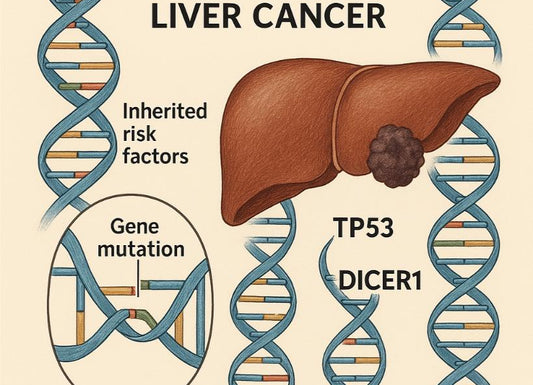Is Hepatitis Airborne? (And What You Should Actually Worry About)
 Written By
Abel Tamirat, MD
Written By
Abel Tamirat, MD

Hepatitis sounds scary and it can be. But is it floating in the air around you? Can you catch it by just being in the same room as someone who has it?
Let’s clear the air (literally). This guide cuts through the confusion and gives you straight answers on whether hepatitis is airborne, how it spreads, and what you really need to watch out for.
First, what is hepatitis?
Hepatitis means inflammation of the liver. It can be caused by viruses, alcohol, drugs, autoimmune diseases, and more. But when people talk about “hepatitis,” they usually mean the viral types: A, B, C, D, and E.
Each type spreads differently and that’s the key to answering whether it’s airborne.
To understand how these viruses differ in behavior and treatment, learn more in our guide on hepatitis C self-care and energy recovery.
So... is hepatitis airborne?
No. None of the major hepatitis viruses are airborne.
You can’t get hepatitis by breathing the same air as someone who has it. You won’t catch it from a cough, sneeze, or shared air space. Even the most contagious form Hepatitis A is not spread through the air.
So if you’re worried about getting hepatitis from sitting next to someone on a plane, sharing a waiting room, or walking past someone in a hallway: you’re safe.
How each type actually spreads

Here’s how the most common types of hepatitis get around:
Hepatitis A
-
Spread by fecal-oral route
-
Usually through contaminated food or water, or contact with dirty hands
-
Common in places with poor sanitation
-
Rarely spreads from person to person unless hygiene is poor
Hepatitis B
-
Spread by blood, semen, or other body fluids
-
Most common through sex, sharing needles, or childbirth
-
Can live on surfaces for days but still not airborne
Hepatitis C
-
Spread by blood-to-blood contact
-
Most often through sharing needles or unsterile medical tools
-
Not spread through kissing, sneezing, or casual contact
Hepatitis D
-
Only occurs in people who already have Hepatitis B
-
Spread the same way as Hep B
Hepatitis E
-
Spread like Hep A (fecal-oral)
-
Mostly through contaminated water
-
Rare in high-income countries
What about coughing, sneezing, or breathing?
Still no. These are how airborne illnesses spread like COVID-19, the flu, or tuberculosis.
But hepatitis viruses don’t travel this way. You’re not going to inhale them or pick them up through casual air exposure.
Even if someone with hepatitis coughs in your face , you’re not likely to catch the virus unless somehow blood or body fluids get into your mouth or eyes (which is rare).
Want to understand more about sexually transmitted types? Read our deep dive on is hepatitis an STD?.
So why do people think hepatitis is airborne?
Confusion. “Hepatitis” sounds like a broad, dangerous disease. People lump it together with HIV, the flu, or COVID-19. Some myths come from past outbreaks where the source wasn’t immediately clear.
Plus, if you hear “infectious liver disease,” your brain may jump to the worst-case scenario. But in truth, most hepatitis transmission requires close contact not air.
If you’re concerned about immunity, explore what it means when hepatitis B surface antibodies are reactive.
When is hepatitis actually contagious?

It depends on the type:
-
Hep A: contagious before and during symptoms
-
Hep B & C: long-term carriers can be contagious for years
-
Hep D & E: contagious during active infection
But again, contagious does not mean airborne. It means that blood, stool, or bodily fluids can pass it on usually through intimate or unsafe contact.
Can hepatitis viruses survive on surfaces?
Some can especially Hep B. It can survive outside the body for up to 7 days. But just touching a contaminated surface doesn’t mean you’ll get infected.
To catch hepatitis B or C from a surface, infected blood would have to enter your bloodstream through a cut, needle stick, or mucous membrane.
Hand hygiene, gloves, and cleaning with disinfectants (like bleach) are enough to prevent spread in most settings.
Who’s most at risk?

Hepatitis risk isn’t about being near someone it’s about what you do.
You may be at higher risk if you:
-
Have unprotected sex with multiple partners
-
Share needles or injection equipment
-
Got a tattoo or piercing in an unregulated setting
-
Live with someone who has chronic Hep B or C
-
Work in healthcare without proper safety practices
-
Travel to places with poor sanitation (for Hep A or E)
-
Were born to a mother with Hep B or C
For deeper insight into acute diagnosis, see our article on the acute hepatitis panel.
How to protect yourself (without panicking)
You don’t need a hazmat suit to avoid hepatitis. Just take basic precautions:
-
Wash your hands before eating or after the bathroom
-
Use condoms during sex
-
Get vaccinated for Hepatitis A and B
-
Avoid sharing razors, toothbrushes, or needles
-
Make sure tattoos and piercings are done safely
-
Be cautious when traveling to areas with poor water or hygiene
-
Wear gloves when handling blood or body fluids in healthcare or caregiving
If you’ve been exposed to any hepatitis virus, talk to a healthcare provider. Post-exposure shots or antivirals may help.
Takeaway
No, hepatitis is not airborne. It doesn’t spread through coughing, sneezing, or breathing the same air as someone infected. Each type of hepatitis spreads in specific ways mostly through contaminated food, water, blood, or sexual contact.
If you’re practicing basic hygiene and avoiding high-risk activities, your risk of catching hepatitis in everyday life is very low. Focus on facts, not fear.
Related Reading
References
Alavian, S. M., Imanieh, M. H., & Imanieh, M. H. (2016). Predictive factors in the incidence of cirrhosis in chronic hepatitis B virus infections. Hepatitis Monthly, 16(5), e34790. https://doi.org/10.5812/hepatmon.34790
CDC. (2024a, April 1). Clinical care of hepatitis C. U.S. Centers for Disease Control and Prevention. https://www.cdc.gov/hepatitis-c/hcp/clinical-care/index.html
CDC. (2024b, May 13). Clinical overview of hepatitis B. U.S. Centers for Disease Control and Prevention. https://www.cdc.gov/hepatitis-b/hcp/clinical-overview/index.html
CDC. (2024c, June 10). Global viral hepatitis. U.S. Centers for Disease Control and Prevention. https://www.cdc.gov/hepatitis/global/index.html
Geta, M., Hailu, A., & Woldeamanuel, Y. (2025). Hepatitis B vaccination coverage and associated factors among children living in northwest Ethiopia city administrations: A community-based study. Public Health in Practice, 9, 100608. https://doi.org/10.1016/j.puhip.2025.100608
Ly, K. N., Yin, S., & Spradling, P. R. (2022). Regional differences in mortality rates and characteristics of decedents with hepatitis B listed as a cause of death, United States, 2000–2019. JAMA Network Open, 5(6), e2219170. https://doi.org/10.1001/jamanetworkopen.2022.19170
Nguyen, T. (2025, May 12). Innovative study identifies more effective and affordable treatment strategies for hepatitis C. Oxford University Clinical Research Unit (OUCRU). https://www.oucru.org/innovative-hep-c-treatment/
Ou, T.-Y., Huy, L. D., Mayne, J., Shih, C.-L., Mai Xuan, H., Thi Hong Nguyen, N., Nguyen Hoai, L., Thi My Bui, L., Chang, Y.-M., Abdi, A. A., Hsu, S.-C., Lin, H.-J., & Huang, C.-C. (2024). Global mortality of chronic liver diseases attributable to hepatitis B virus and hepatitis C virus infections from 1990 to 2019 and projections to 2030. Journal of Infection and Public Health, 17(7), 102443. https://doi.org/10.1016/j.jiph.2024.04.027
Tsoulfas, G., Goulis, I., Giakoustidis, D., Akriviadis, E., Agorastou, P., Imvrios, G., & Papanikolaou, V. (2024). Hepatitis C and liver transplantation. Hippokratia, 13(4), 211. https://pmc.ncbi.nlm.nih.gov/articles/PMC2776333/
WHO. (2018). Regional hepatitis data. World Health Organization. https://www.who.int/westernpacific/health-topics/hepatitis/regional-hepatitis-data
World Health Organization. (2024). Hepatitis C. World Health Organization.

Dr. Abel Tamirat is a licensed General Practitioner and ECFMG-certified international medical graduate with over three years of experience supporting U.S.-based telehealth and primary care practices. As a freelance medical writer and Virtual Clinical Support Specialist, he blends frontline clinical expertise with a passion for health technology and evidence-based content. He is also a contributor to Continuing Medical Education (CME) programs.



